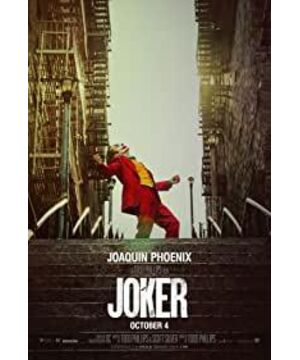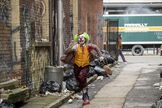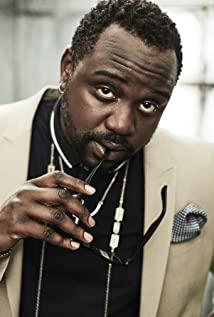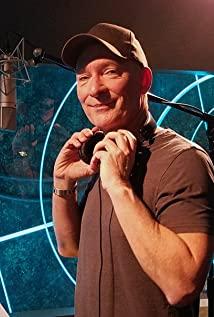After the explosion of "Roma" in Venice last year triggered a global wave of non-dimensional movie viewing, this year's "Joker" continues to burn the fire. From winning the Venice Golden Lion, to the global release in early October, and to the recent streaming media launch. After more than two months of "warming up", Chinese fans have finally seen the true face of "Joker" in an all-round way.
At the same time, although "Joker" has been recognized by the industry as the top annual masterpiece, some fans will inevitably sigh: "Perhaps because it is held too high, it is not as good as expected after watching it." Such a sigh Of course it is understandable, after all, viewing tastes vary from person to person. But what makes it hard to understand is that whenever a high-scoring movie like "Joker" comes out, there will always be some fans who jump out and scold them to show their difference. Perhaps, this is the difference between "clown" and "jumping clown".
In my mind, "Joker" is a masterpiece of this era; and we really haven't seen such a mainstream movie for a long, long time. We've been in the bubble of entertainment movies led by the Marvel Universe for far too long. Although "Joker" appeared in the name of DC, the anti-type atmosphere in its bones has actually gone far beyond the superhero movie itself.
In terms of the wide audience of the film "Joker", its cultural dissemination and social discussion have surpassed the art films produced by many big directors in the past two years. The production cost of about 50 million US dollars, as of today, the global box office has exceeded 1 billion US dollars, becoming the sixth film in the history of Warner Bros. with a global box office exceeding one billion US dollars. From the top prizes of the world's top film festivals to dazzling global box office receipts, it relies on more than mere superhero movie gimmicks.
Different from previous DC movies, "Joker" has "drawn a clear line" with the Super British series before it was staged, and the script has basically nothing to do with the comics. It just has a DC background and carries it with art films in a maverick manner, with a stronger warning color than many self-proclaimed critical films.
If Nolan's "The Dark Knight" is to darken the hero and make the society sober from the heroic artistic virtuality, then today's "Joker" is to personalize the darkness and make people understand that demons are human changes. , every viewer who watches the movie may be able to see the clown in his heart.
*The following content contains spoilers, please pay attention.
【A man's comedy】
The Joker is probably the most famous of all the villains in DC Comics movies. This is also thanks to the portrayal of "Joker" by a large number of excellent actors, Caesar Romero, Mark Hamill, Jack Nicholson, Heath Ledger, and Jared Leto, who Interpret different clown images in their own way.
But over the years, few have created characters from causes and motives like Joker. It can be said that the film jointly created by Joaquin Phoenix and director Todd Phillips is ingenious in conception.
The background of the film is set in Gotham City in 1981, and the society practices the Matthew effect over and over again, and the rich get richer and the poor get poorer. As director Todd Phillips described it, Gotham is a filthy city experiencing garbage siege, labor disputes, and plague.
From the opening scene, the film has already laid a lot of groundwork for the atmosphere; and the most surprising thing is undoubtedly that the strange atmosphere and the crazy performance complement each other. Stimulate.
The beginning of the film is a prelude with synchronized audio and video, the background sound plays the news about the strike of the cleaners, and the picture is slowly pushed behind Arthur, who is wearing clown makeup. Outside the window is the icy and desolate chain bridge. The gloomy sky matches the environment inside the house. The colleagues in the room gathered together to chat in twos and threes. Only Arthur was sitting in front of the tall vanity mirror. Visually create a very strange atmosphere.
After three or two shots, the title is completed, with a forced fake smile, echoing the phrase "he was born to bring joy and laughter to the world" that appears from time to time in the film. This is what Arthur struggled before he became the clown, which made the film. The key element in "laughs".
There's nothing superfluous on the screen, switching straight to Arthur playing the clown on the street, and Arthur's stage transitions from indoors to the outdoors with 80s porn theaters and musical instrument rows. Phoenix shows the musicality of "The Joker" for the first time in this shot, and this short shot of less than ten seconds, this musicality retained in the soul, is also good for Arthur's rich body movements later in the film. paved the way.
After that, the picture hardly gave the audience much psychological preparation. Arthur's billboard was robbed for no reason, and the picture changed instantly. The shallow depth-of-field shot highlights the chasing focal characters, and the blurred street background buildings create a sense of high pressure in the city. A series of smooth chasing action is a montage of street rushing, crossing the road, beating in the back alley, and there is the only oblique bird's-eye view in the whole film.
Then there is a close-up of Arthur curled up on the ground after being beaten, and he was beaten to cover his lower body and struggle. Here, Phoenix also made a gesture of reaching out and pulling back the billboard, but it has long been unable to repair it, and he will also bear the compensation. A few simple details directly outline the lonely and miserable situation of the characters.
In terms of the overall play, the film revolves completely around the main character Arthur (The Clown). Through a lot of detailed descriptions, the film shows Arthur, an emotionally ill person, who dreams of becoming a stand-up comedian. Street clown entertainer, transformed from humble loser to deranged avenger.
In terms of tone and setting, the film tries to fit the style of American cities in the 1980s. The overall dark and cold urban environment shows a depressing and dull atmosphere.
And almost all supporting roles are trigger mechanisms that induce the birth of the devil in Arthur's heart. The film uses characters to drive the narrative, and completes the dramatic structure and tension based on the contradictions and conflicts of a character. This also requires that every detail of the character must be Do excellence. Environmental factors, sound elements, lighting, etc., all have to be highly coordinated with the state of the characters to narrate.
For example, Arthur's most iconic action in the film is to laugh convulsively when he is sick, but Arthur said, "I have never been happy for a moment in my life", and his laughter is destined to have nothing to do with happiness. Sick laughter, self-abased laughter, crazy and hideous laughter, and terrifying laughter that cracks the corners of the mouth when angry, every "laugh" in the film is different with the change of the character's situation.
It is also a morbid mad laugh. On the bus at the beginning of the film, it is obviously a shameful and suppressed mad laugh when the disease occurs in a public place; when teasing a dwarf colleague, the facial expression that turns his head and immediately converges is obviously a mad laugh that is deliberately feigned to go along with the illness. .
When facing the three gentle scum on the subway, it was the "clown" in his heart who burst out laughing wildly; and at the end of the film, his laughter in handcuffs in the mental hospital undoubtedly belongs to the "clown". Laughing wildly. Phoenix's wild laughter in different environments and states has a three-dimensional texture of the character.
In the evolution of nearly two hours, Phoenix's complex and varied facial expressions, combined with the atmosphere created by Todd Phillips, perfectly portrayed Arthur who can put on or take off the clown mask at any time.
The most obvious scene is when Arthur is watching other stand-up comedians in the club, he is taking notes with his right hand, and then the camera cuts to his home, Arthur gradually enters the clown state, he dances his upper body, and the camera changes to his left hand to write down" Everyone expects you to behave as if you don't, and the smiley face on the letter "O" is a direct hint. The "Joker" who always shoots with his left hand can dance gracefully and twisted when he really transforms into a "Joker".
Many people will think that Phoenix is a "method school" actor, but in fact, from the interpretation of "Joker", Phoenix is actually an out-and-out feeling school, from body shape, eyes, movements, and meticulous to the upper lip when he feels inferior. The shaking of the man, and the tightening of the nose when it is difficult to contain the anger, all show that he is digging deeper into the character.
Especially the running posture of Arthur in the film, Phoenix's uncoordinated clumsiness at the beginning, gradually to the more and more agile movements in the street chase with the police in the later period, the overall conscious change is that the actor completely brings himself into the role and immerses himself in it. , and evolved into a "clown" with the characters in the film.
Phoenix's perfect interpretation made many fans feel that Heath Ledger had a "Joker" after him. But strictly speaking, from the narrative arrangement of the storytelling, the film still has some technical flaws. The film took two hours to complete the switch between Arthur and the "Joker", so Arthur began to enter a state of alienation very early. The speed ratio of the police in the process of tracking down the killer is obviously not in line with common sense. It can be clearly seen that it is to cooperate with the plot arrangement of Arthur's alienation.
Especially at the end of the film, when the "Joker" was rescued from the police car by the rioting followers, he jumped on the roof and performed a classic dance, but everything was on camera, and Arthur returned to the mental hospital in a hospital gown and handcuffs. Observatory. It must surprise many viewers. But when Arthur first appeared in the psychosocial counseling room at the beginning of the film, there was a flash of three-second shots, the same hospital gown, the same observation room, the same counselor, and the same number on the wall clock as 11 :11, which seems to imply in the surreal environment that the "Joker", the spiritual master of the body, has been completely released.
But from another angle, it is not uncommon to interpret the film as Arthur's alienation process from the first psychological consultation. In this setting, the film sells a Nolan "Memento"-style pass, but it seems a bit superfluous. Judging from the overall quality of the film, the crazy dance of the clown after jumping on the roof has been pushed to the extreme, and the memory structure in the hallucination is really unnecessary.
[Total death, full rebirth]
The film is a Phoenix one-man show from start to finish, with all the characters setting off his "Nirvana." The whole film needs to drive the audience to be immersed in the catalysis from Arthur to the Joker, which is actually very difficult. In addition to the meticulousness of the film's atmosphere creation, this kind of psychological horror that burns slowly to a raging fire will also spread to the viewers themselves unexpectedly as the plot progresses.
1. The evolution of personal violence
It can be said that the success of the role of the clown lies in its progressive three-dimensional character shaping. When the film expresses the image of the clown, it does not use all its strength and keeps leaning on the target person. In fact, Arthur is constantly repeating the tangle of being swallowed and struggling on the way to the ultimate madness of the clown.
This is also the biggest difference between The Joker and The Dark Knight. Arthur's image of a loser and the sadness in life are reflected in the audience's heart to crack a certain kind of empathy, which is different from the fear of reaching the top at the beginning of "The Dark Knight". "Joker" is a place where Arthur lives on. After the spiritual straw was crushed one by one, he became a maniac murderer.
Despite being the unnoticed loser in Gotham City, at the beginning of the film, Arthur can barely suppress the demon "Joker" with the only goodwill. In the process of Arthur's alienation, the film sets the illusion of maintaining Arthur's humanity in threefold. The first straw was the family warmth from the mother (the real mother-child relationship was not known at that time), and the encounter with the neighbor, let's call it an emotional illusion.
The second straw is the affirmation of the idol Murray Franklin in the fantasy, and the affirmation from the "father" Thomas Wayne in the expectation. This is the second layer of the illusion of respect from the previous generation of patriarchy; and the fact On the top, the film also sets a straw for Arthur's debacle. The psychological counselor who cared about his condition at the beginning, and the colleague who gave him a pistol for self-defense, both constitute the illusion of being accepted by the general public at the same time.
The film advances the plot with a rhythm of ups and downs. When the "Joker" first appeared on the subway to solve three scumbags, and danced the clown dance in the green-lit public toilet, the film began to change speed for the first time. The closure of the psychological counseling room, and the loss of work due to the betrayal of a colleague, the first illusion of fragility was shattered. But at this time, the lover is on the side, and the relationship with the mother is warm. Although the "clown" appears and disappears from time to time, it has not yet broken through the bondage.
Until I was told the truth about my mother's identity at the Wayne Mansion, watched the mockery of my idol Murray Franklin on TV in the hospital, and was humiliated by my father who was mistaken in the theater, I was surprised in reality that the lover who had always warmed me turned out to be Just an illusion. Two-thirds of the way through the film, the second shift begins, completely releasing the inner evil, killing the clown in the clown's oil paint, and killing his mother with his own hands to get rid of the emotional bondage.
The climax of the film occurs when Arthur is invited by Murray Franklin to perform on a TV show. When the gorgeous colorful curtain is pulled away, Arthur officially changes into the clown's identity and rotates in. This natural performance scene is quite reminiscent of Portman when he came to the stage as a black swan in "Black Swan". At this time, the clown is obviously in a state of madness and weirdness. He can control the wild laughter freely, blow the idol's head with a shot to break the last illusion, and seize control with his own hands.
When the clown was rescued and danced ecstatically in the last bloom, the maddened crowd below pushed to a climax of madness in the smog. The blood is scarlet oil paint, and the corners of the clown's mouth are drawn to complete the final thick stroke. Since then, he has become the spiritual leader of Gotham City's sin.
The film creates a counter-cultural anti-hero character through extreme narrative methods. It maximizes ridicule in an anti-tragic manner, with a strong personal aura, but what is interesting is that this clown is not a "hero", but uses violence to destroy the mainstream postmodern culture, thus establishing its anti-cultural nature .
The film "Joker", in the name of "comedy", satirizes the groups who have fallen into the devil's way in an inhumane society, but in fact Arthur is powerless to his own demonization. He longs for attention, but only sees his own insignificance; he longs for a smile, but can only tear with his hands; he longs for perfection, but only sees nothing; he longs to be loved and respected, but finds himself humbled. Abandoned and despised. When these paradoxical contradictions come together, they produce the most perverse and sinful emotions that people can't imagine. Because in the process of condemning and despising himself, he chose to affirm his own flaws with almost fatal hatred.
2. The spread of social violence
In fact, the clown represents everything that is nihilistic and rebellious in today's society. In addition to showing Arthur's process of breaking free from human nature and becoming a murderous maniac, the film has also been supplemented by a sub-line of social violence with voice-overs, TV programs and changes in social conditions.
The reason why the Joker became the leader of the dark forces in Gotham City is not simply because he became a murderer because of his demonization, so he became the leader. From the strike, plague, and piles of garbage in the background news at the beginning of the film, it developed into a hostile demonstration of the rich and the rich and hated the rich, to the final riots and the formation of dark organizations, it can be said that the city of Gotham is accompanied by clowns " grow" and fall.
Presumably there must be a peculiar inversion in human nature to be proud of being in a state of riot. The extreme madness in the film "Joker" is exactly in line with Blaise Pascal's exposition in "Book of Thoughts", the more unbelievable the human state seems, in a society blinded by extreme hatred , Human historical experience tells us that the number of such people is often unimaginable.
The Joker's destruction of social principles made him an anti-establishment icon. No matter what morally wrong the character does, the Joker's core can appeal to anyone who is disappointed by society, and motivates anyone who wants to see the world destroyed.
While shaping the evolution of the Joker, the film actually depicts a deeper level of social despair, using Gotham City in 1982 to express the desperation of the "best" democratic political order to date ("Not good but the best"). ”, quoted in Henry Alfred Kissinger’s Diplomacy).
In a society that seems fairer, the more people at the bottom are struggling in the quagmire that cannot be changed. As Žižek commented on the film, the social despair and nihilistic stalemate that "Joker" shows is not an ultimate decadent apocalypse. Rather, it is a wake-up call, and we must go further through hell before dark nihilism looms over us.
At the end of the film, Arthur eventually becomes the Joker, a spiritual leader of street riot society assassination. In reality, in 2012, at a movie theater in Colorado, USA, during the release of "The Dark Knight", a murderer entered the movie theater with a gun, killing 12 audience members. Twitter launched a boycott of the movie "Joker".
The new film "Joker" surpasses Marvel movies, and even goes beyond the film medium itself to form a social topic, not only because of the excellence of the work itself, but more importantly, the film is essentially at the forefront of popular culture, looking down on the cultural loss shared by the global society, In just 122 minutes, the clown's personal violence devoured and social violence spread.
In fact, the social message of "Joker" is dangerous, but more dangerous is ignoring the danger than the "danger" itself. Its emergence means that we have another film that is willing to take on the danger of sending a socially dangerous message to the public. As Thomas Wayne said in the film, only cowards would hide behind a clown mask and commit crimes. So hiding behind the beautiful appearance of whitewashing peace, isn't it cowardly and cowering?
As director Martin Scorsese wrote in The New York Times earlier, "cinema is about 'revelation'—aesthetic, emotional, and spiritual; it's about 'character' ) - the complexity of people and their contrasting and sometimes contradictory natures, the way in which they can hurt each other, love each other, and suddenly confront themselves. It's about encountering the unexpected on the screen something that comes from the real life it dramatizes and further expands the possibilities of the art form of cinema.”
If you can really walk into the clown's heart, you will undoubtedly be horrified by the darkness in his heart. And it is this infiltrating and real darkness that makes people reflect on the difficulties and beauty in real life after walking out of the theater.
Isn't this exactly the meaning that cinema, as one of the art forms, brings to human society? There is no good or evil in art itself, good and evil only exist between the thoughts of the human heart. Good thoughts do not disappear because of the demons represented in a work, and evil thoughts do not disappear because people are blindfolded.
Author | Pig Shiding; Public Number | Watching Movies and Seeing Death
Editor | Teenager on the Roof; Please indicate the source for reprinting
View more about Joker reviews











